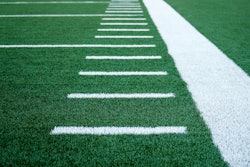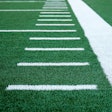The number of heat-related deaths among high school and college football players tripled between 1994 and 2009, and changes in weather conditions may be the cause, say scientists at the University of Georgia. Analyzing temperature and climate data on the days of 58 players' deaths over the 30 years prior to 2009 along with records of the height, weight and position of each player, researchers found that heat indexes were notably higher during the latter 15 years, coinciding with the increase in deaths.
"In general, on days the deaths occurred, the temperature was hotter and the air more humid than normal local conditions," said climatologist and associate professor of geography Andrew Grundstein, senior author of the study.
Published in the International Journal of Biometeorology, the study found that the majority of the deaths occurred in August, on days when practices ended prior to noon. The study also found a trend toward increased size in football players since the 1980s, another possible contributing factor. In particular, linemen accounted for 86 percent of the deaths.
The study began in response to a 2009 Georgia High Schools Association mandate that schools develop written polices for extreme-weather practice, which schools struggled with due to a lack of adequate data examining the relationship between temperature and injury. While the American College of Sports Medicine offers intensity guidelines for athletic practices based on a wet bulb globe temperature measurement and the National Weather Service offers a heat index, neither system adequately accounts for sun exposure or protective pads and helmets, says Grundstein.
"We all want a single magic number to indicate the heat threshold," Grundstein said. "But so many factors contribute to heat stress that it's impossible to draw the line at a single temperature." Still, he says, the heat-measurement tools available can be useful, as well as ensuring players are slowly acclimated to outdoor workouts and that all staff is trained to watch for signs of heat stress.
Though the data included in the study included only the period between 1980 and 2009, the trend in athlete deaths appears to be ongoing, with 2011 seeing the "worst week in 35 years" of athlete deaths. Grundenstein is currently working with other researchers to study heat-related injuries in high school football players, hoping to provide data necessary to curb the incidence of heat-related injury and reduce the number of athlete deaths.





































